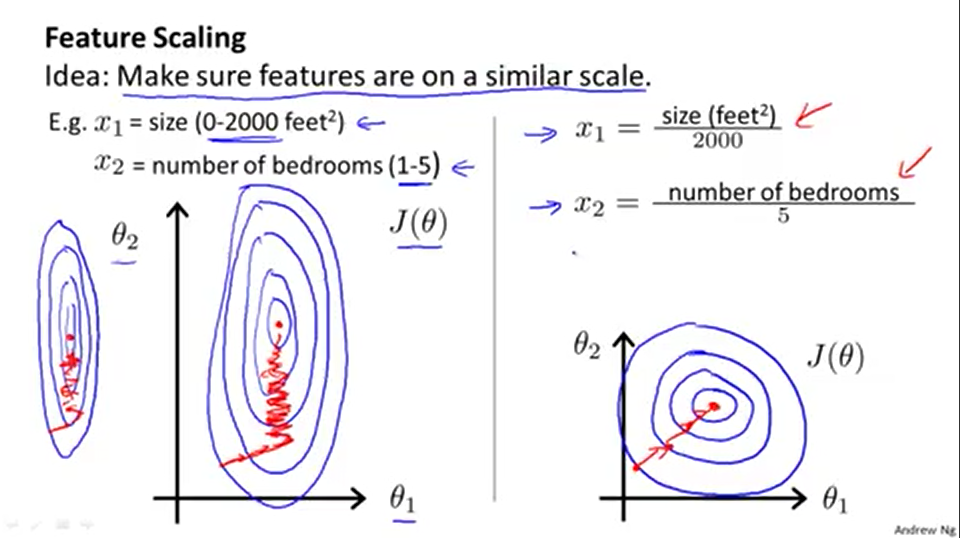多元线性回归
多元线性回归
标签: 线性回归 多元线性回归 吴恩达
1. 假设函数
假设\(x_0 = 1\),则有$$h_\theta(x) = \theta_0x_0 + \theta_1x_1 + \theta_2x_2 +\cdots+\theta_nx_n$$
即 $$h_\theta(x) = \theta^TX $$
其中:
$$X = \begin{bmatrix} x_0 \\ x_1 \\ x_2 \\ \vdots \\ x_n \end{bmatrix}\quad
\theta = \begin{bmatrix} \theta_0 \\ \theta_1 \\ \theta_2 \\ \vdots \\ \theta_n \end{bmatrix}\quad$$
2. 代价函数
或者
代价函数依据上一篇博客所讲述的内容以及假设函数推导而来。即:
3. 梯度下降
(1) 方法
Repeat {
\(\theta_j := \theta_j - \alpha\frac{\partial}{\partial\theta_j}J(\theta)\)
}
同时 更新每个参数。
容易计算得:
$$\frac{\partial}{\partial\theta_j}J(\theta) = \frac{1}{m}\sum_{i=0}{m}(h_\theta(x)-y{(i)})x_j$$
因此得到:
$$\theta_j := \theta_j - \alpha\frac{1}{m}\sum_{i=0}{m}(h_\theta(x)-y{(i)})x_j$$
(2) 特征缩放

特征缩放的原因如上图所示,(图片来自吴恩达教授机器学习公开课视频截图),特征缩放能使得梯度下降更快地收敛。
(3) 学习速率 \(\alpha\)
\(\alpha\)的值如果太大,容易造成震荡或不收敛,太小则学习速率太慢。实际操作中根据经验或尝试逐步调节参数。



